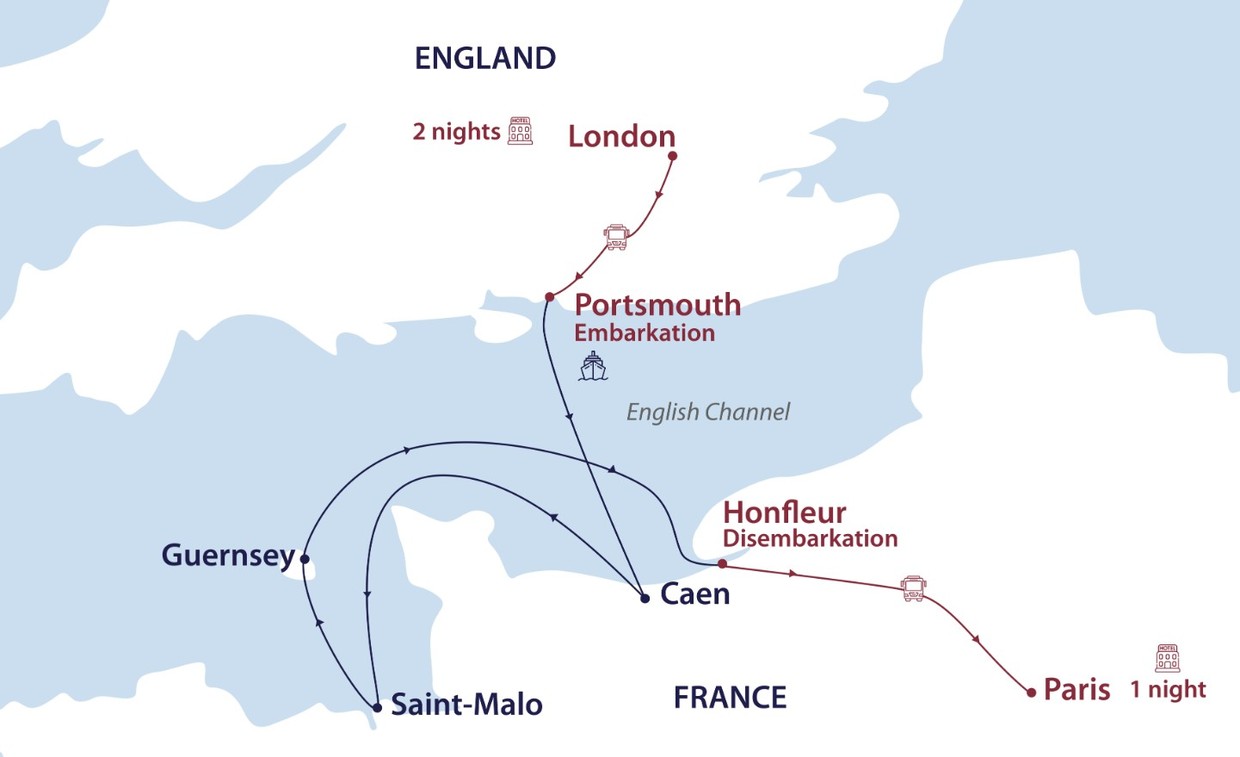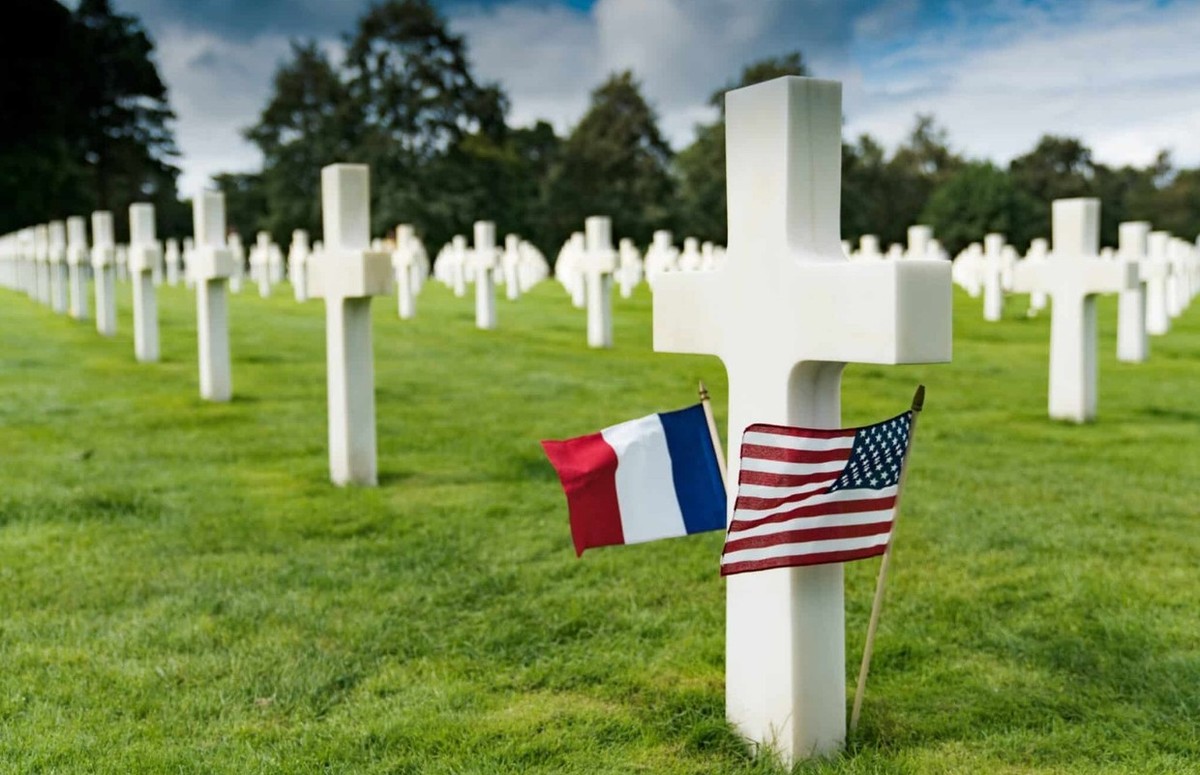
Welcome to Aurora Expeditions’ A D-Day Commemoration
In honour of the men and women from across the globe who united in a valiant struggle for freedom in June 1944, we embark on a poignant journey where the echoes of courage and sacrifice reverberate along every shoreline. On 6 June 1944, Allied forces launched a historic battle that would alter the course of World War II forever. This voyage pays homage to those who came ashore along the iconic Normandy coastline, encompassing the haunting history of Omaha, Utah, Sword, Gold, and Juno beaches.
We plan to attend the commemorative events, including the evening vigil at the Bayeux War Cemetery on the eve of the D-Day anniversary, and on 6 June at the Normandy American Cemetery and Memorial at Colleville-sur-Mer. Delve into museums and memorials that recount individual stories of heroism and resilience, and visit the Normandy villages that still commemorate their liberation over 80 years later.
Following the footsteps of those who fought and fell, we gain a profound understanding of the immense courage exhibited by the participating forces and their enduring legacy. Join us for an unforgettable tribute to the events that reshaped the map of Europe, in honour of those to whom we owe so much.
We plan to attend the commemorative events at the Normandy American Cemetery and Memorial, Colleville-sur-Mer on 6 June as well as the evening vigil at the Bayeux Commonwealth War Cemetery on 5 June. Should you wish to join us, please be aware that the exact timings for these events and ticket availability have not yet been announced. We will make every effort to secure tickets, but we cannot guarantee their availability at this time.
- Trace the journey of Operation Overlord from London to Portsmouth, through Normandy and Brittany, and finally to Paris
- We plan to attend the 82nd D-Day commemoration service at the Normandy American Cemetery and Memorial at Colleville-sur-Mer and the Normandy liberation villages
- Join a local guide for an in-depth tour of the Normandy beaches associated with the D-Day landings
- Discover the personal stories of heroism, with our guides at a selection of key sites and museums associated with the D-Day campaign
- Follow the World War II story of Guernsey and Saint-Malo through visits and locally guided tours
Prices quoted here are often dependent on currency fluctuations. Please check with (01432 507450 or info@small-cruise-ships.com) for the very latest price, which may well be cheaper than the one advertised here.
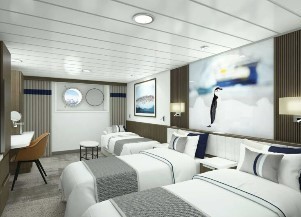
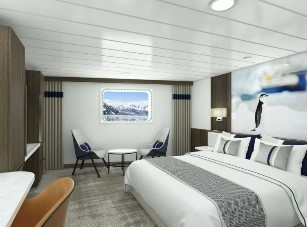
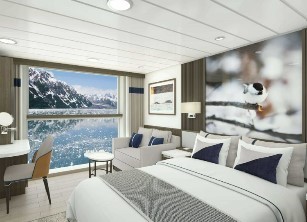
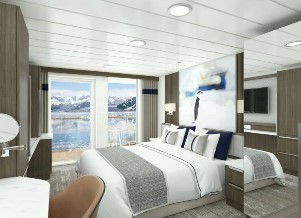
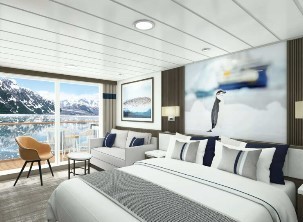
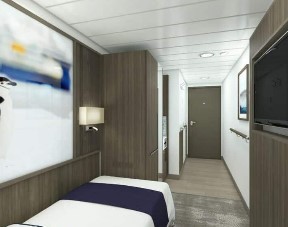
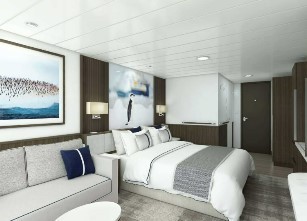
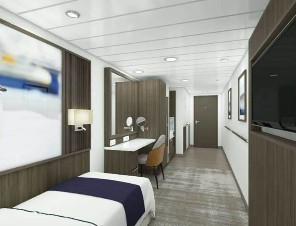
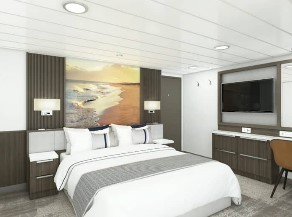
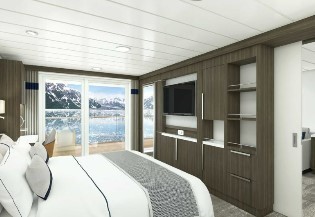
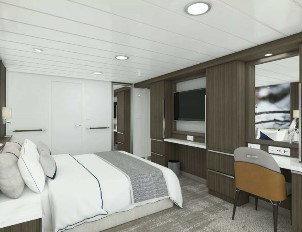
Welcome to London. On arrival at London airport make your way to the Arrivals Hall to meet a representative from Vantage Explorations, followed by a transfer to our group hotel. At the hotel, visit our hospitality desk in the lobby to meet our team who will provide you with useful information regarding pre-embarkation procedures and about your time in London. You will also receive cabin tags for your luggage. Please clearly label the tags with your name and your cabin number on the ship. This evening offers time to relax in preparation for our ‘day out in London’ tomorrow. Our group hotel has a popular restaurant and is close to plenty of corner pubs and cosy restaurants should you wish to try some local cuisine.
Accommodation: London Hotel
Today we immerse ourselves in stories from London’s wartime era. During World War II, London faced a period of relentless bombing raids, with over 30,000 civilians losing their lives during the Blitz from 1940 to 1941. The city’s spirit was tested as residents huddled in backyard bomb shelters and London Underground stations during air raids, while the introduction of V-1 and V-2 rockets in 1944 and 1945 brought further destruction and fear. Amid these hardships, King George VI and Queen Elizabeth The Queen Mother chose to remain in London, embodying steadfast resolve and solidarity with their people. Winston Churchill, the country’s indomitable prime minister, also stayed, leading and inspiring resilience through his speeches. Daily life was marked by hardship, including food shortages and rationing, constant alerts and the strain of living under siege conditions. Despite these challenges, Londoners’ spirits remained unbroken, embodying an enduring resolve and unity.
Our day is spent at two poignant memorials dedicated to those who lived through the war: the Imperial War Museum, and the Churchill War Rooms. Founded in 1917, the Imperial War Museum commemorates the sacrifices and experiences of those involved in conflicts from World War I to present day. Originally housed at Crystal Palace, it moved to its current location in Lambeth, London, in 1936 to better accommodate its extensive collections of military artefacts, exhibitions and personal stories.
A stand-out feature of the Imperial War Museum is its D-Day section, which offers an in-depth look at the critical Allied invasion of Normandy on 6 June 1944. Through personal testimonies, artefacts donated by veterans and their families, and immersive displays, this exhibition explores the intricacies of Operation Overlord. Visitors can engage with multimedia presentations and reconstructed scenes that illustrate the strategic planning, the valour of the troops, and the profound impact on civilians. This section is a moving tribute to the courage and sacrifices of those who participated, preserving their stories for future generations to remember and honour.
Our journey continues this afternoon when we tour one of London’s most authentic World War II locations. Few sites capture the essence of World War II like London’s Churchill War Rooms, the nerve centre of the Allied offensive. This underground labyrinth housed Winston Churchill and much of Britain’s wartime cabinet, playing a pivotal role in orchestrating the D-Day invasion and the overall Allied victory. On 10 May 1940, Britain’s new Prime Minister strode purposefully down to the basement of an anonymous government building and declared, ‘This is the room from which I will run the war.’ Deep beneath Whitehall, these secretive chambers, with their offices, map rooms ‒ and even bedrooms ‒ preserved in their wartime state, were where the war was strategically ‘fought’. Churchill famously said, ‘The War Rooms were the headquarters of the Allied Command. They were the centre of the action.’ Today, the Churchill War Rooms, including the acclaimed Churchill Museum, offer a fascinating glimpse into the hidden world where critical decisions were made, and are one of London’s most compelling attractions.
Tonight, we embrace the spirit of VE Day cockney-style with our own ‘knees-up’ at a one-of-a-kind London venue. The days of rationing are over and it’s time to celebrate with some 1940s music and traditional ‘pub grub’.
Accommodation: London Hotel
Meals: Breakfast, canapes and drinks at our Welcome Event
We leave London and head to our first stop for the day. Just north of Portsmouth, Southwick House played a pivotal role in World War II as the forward base for the Supreme Headquarters Allied Expeditionary Force (SHAEF). From 2 June 1944, this elegant Georgian mansion became the nerve centre for the D-Day invasion.
It was at Southwick House that General Dwight D Eisenhower, the Supreme Commander of the Allied Expeditionary Force, made the historic decision to commit 3,000,000 men and 2,727 ships to the operation that would turn the tide of the war. Initially planned for 5 June, D-Day was delayed due to poor weather conditions predicted for the English Channel. Eisenhower and his team, including Admiral Bertram Ramsay and General Bernard Montgomery, gathered in the mansion’s library to review the latest weather report. Following Captain James Martin Stagg’s forecast of improving conditions, Eisenhower made the decisive call, ‘Ok, let’s go!’ allowing the campaign to proceed on 6 June. The map room at Southwick House was crucial for tracking the invasion and the Battle of Normandy. We hope to visit the map room and small museum here to start our D-Day journey. (Southwick House is currently used by the Royal Navy. Access will be confirmed closer to our travel date. If a visit is not possible, we hope to visit The Red Lion at Southwick which has its own “war time’ story to tell.)
On reaching Portsmouth we visit the D-Day Story. This popular exhibition offers a compelling insight into the pivotal role this historic port city played in the Allied invasion of Normandy. The museum opens with Landing Craft Tank 7074 (LCT), the last surviving LCT from D-Day, setting the stage for a deeper exploration of the operation.
Portsmouth, being one of the main embarkation ports, was central to the planning and execution of the invasion. The city was a bustling hub of activity, with thousands of troops, vehicles and supplies being organised for Operation Overlord.
The museum’s preparation galleries delve into the strategic planning that began in Portsmouth, showcasing the extensive logistical efforts that were critical to the success of the operation. As you move through the D-Day and Battle of Normandy sections, you’re transported back to 6 June 1944, experiencing the intensity of the landings. The Legacy gallery and Overlord Embroidery conclude your visit with a powerful tribute to the bravery and sacrifice of those involved.
Sailing up the Orne River in the early hours of 5 June, we dock at the port of Caen, where we remain for two days, giving us time to explore the region’s D-Day sites and memorials.
It is well documented that the taking of Caen played a pivotal role in the World War II D-Day campaign. On 6 June 1944, as the Allied forces launched Operation Overlord, the aim was to secure a foothold on the Normandy coast, but Caen, situated strategically inland, became a crucial objective due to its location and extensive infrastructure.
The Battle of Caen, which unfolded between June and August 1944, was one of the longest and most intense battles of the Normandy campaign. The city was a primary target for the British and Canadian forces, who aimed to capture it quickly. However, German forces, well-entrenched and heavily fortified, put-up fierce resistance, resulting in prolonged and brutal fighting. Caen endured extensive bombing and artillery shelling, leading to significant destruction and civilian casualties, with the city almost entirely reduced to rubble by the battle’s end. Despite these challenges, the Allies persisted, gradually encircling and breaking through the German defences. The eventual liberation of Caen on 20 July 1944, was a turning point in the Normandy campaign, allowing the Allies to push further into occupied France.
Personalise your exploration with our included ‘Your Choice’ experiences.
Option 1 – Full-day experience: Caen Memorial Museum and the D-Day Beaches
Built above the former command post of German General Wilhelm Richter, a critical site during the early weeks of the battle, the Caen Memorial Museum is considered one of the best D-Day museums in France. Offering an immersive exploration of the 6 June landings and their broader impact on the Battle of Normandy, the D-Day exhibit places this pivotal event within the context of the wider campaign, essential to the liberation of France and Europe. Through documents, artefacts, and personal accounts, visitors gain a comprehensive understanding of the invasion’s significance. We return to the ship for lunch, before driving west to tour the D-Day beaches and memorials.
Option 2 – Full-day experience: Pegasus Bridge and the D-Day Beaches
Visiting Pegasus Bridge immerses you in a crucial chapter of D-Day history. In the early hours of 6 June 1944, Major John Howard led 181 men from D Company of the Oxfordshire and Buckinghamshire Light Infantry in a daring airborne operation. Their gliders, towed across the Channel by Halifax bombers, landed with remarkable precision near the Orne River and Caen Canal.
‘Our job was to clear the ground for our gliders to land near Pegasus Bridge,’ Howard recalled. By 12.26am, the bridge was captured in a fierce 10-minute firefight, securing a vital crossing for the Allied advance. Tragically, Lieutenant Den Brotheridge fell as the first British soldier killed in the Normandy Invasion. The bridge was later renamed Pegasus Bridge in honour of the Parachute Regiment’s emblem. Today, a museum and memorial on Major Howard Road commemorate this historic battle. The original bridge, now replaced by a larger replica, remains a prominent display. The soldiers who fell are buried in the nearby Ranville Cemetery, marking their sacrifice. We return to the ship for lunch, before driving west to tour the D-Day beaches of Normandy and memorials.
Option 3 – Full-day experience: Airborne Sainte-Mère-Eglise Museum and the D-Day Beaches
A few miles from the Normandy landing beaches, the Airborne Museum stands as Europe's largest tribute to the 82nd and 101st Airborne Divisions who fought in the Normandy campaign. Originating from World War I, the 82nd Infantry Division, known as the "All American" division, was composed of men from every state in the U.S. By mid-February 1944, the 82nd AB was stationed in Nottingham, England, preparing for D-Day. Reinforced by the 507th and 508th Parachute Infantry Regiments, the division faced heavy combat in Normandy, losing over 2,000 men and sustaining nearly 8,000 wounded and 350 prisoners before returning to England on July 13, 1944. The museum features historic Waco gliders and C-47 planes, used during the campaign. In the new Operation Neptune exhibit, you can experience a simulated parachute jump on June 6, 1944, embark on a C-47 in England, and drop into Sainte-Mère-Église amid the fighting. We continue to tour the D-Day beaches and memorials. (Note: Due to the museum’s location, passengers joining this tour will be offered a boxed lunch)
Each of the above tours will visit the D-Day Normandy beaches and memorials with a local guide.
On the night of 5 June and into the early hours of 6 June, airborne troops parachuted into action while heavy bombers targeted key coastal artillery. An armada of 5,000 ships, including a thousand battleships, crossed the English Channel under cover of darkness and storm, their approach shielded by damaged German radar stations. At 5.45am, battleships began their bombardment, paving the way for landing craft and the first assault waves. The names Sword, Juno, Utah, Gold, and Omaha have become legendary as the sites where tens of thousands of troops stormed ashore.
In the afternoon, we explore these historic beaches and their memorials dedicated to the brave men who landed on D-Day and in the days that followed. Our local guides provide a vivid account of the events, bringing the stories of courage and sacrifice to life.
Utah beach – At 6.30am, the US 4th Infantry Division, led by General Barton and supported by amphibious tanks, arrived at the La Madeleine dunes on Sainte-Marie-du-Mont Beach. Coastal currents had pushed their landing craft two kilometres south of the intended site, making the landings considerably more perilous. However, diminished by intense air and sea bombardment, German resistance was relatively weak. The US faced only minor losses, with approximately 50 dead and around 150 wounded. By early afternoon, they had linked up with the 101st Airborne Division.
Sword Beach – To the west of the Orne, between Langrune-sur-Mer and Ouistreham, the sector was heavily fortified. General Rennie’s 3rd British Division, bolstered by two special commando brigades, landed at Hermanville-sur-Mer and Colleville-sur-Mer. Intense fighting was needed to capture Ouistreham. In the afternoon, Lord Lovat’s 1st Special Service Brigade successfully reached the Ranville and Bénouville bridges (Pegasus Bridge), linking up with the paratroopers. Meanwhile, the 4th Brigade faced difficulties in capturing Lion-sur-Mer and Luc-sur-Mer, leaving a gap between Sword and Juno beaches. This breach allowed a detachment from the German 21st Panzer Division to infiltrate and briefly reach the sea before retreating. The 3rd British Division’s main force, delayed by German fortifications, was unable to capture Caen as intended.
Gold Beach – The British 50th Infantry Division, led by General Graham, landed at Asnelles and Ver-sur-Mer around 7.25am. Despite fierce German resistance at both ends of their landing zone, the enemy was pushed back towards the centre, allowing the British to advance inland. By the evening of 6 June, the 50th Division’s vanguard was at the outskirts of Bayeux, which they entered without conflict the following day. Meanwhile, in the late afternoon, the 1st Hampshire Regiment advanced along the coast and captured Arromanches, the site designated for one of the artificial ports.
Juno Beach – The sector between Courseulles-sur-Mer and Saint-Aubin was assigned to General Rodney Keller’s 3rd Canadian Infantry Division, with support from the No. 48 (Royal Marine) Commando. Navigation challenges caused by coastal reefs delayed the arrival of landing craft, which reached the shore at high tide and encountered the formidable obstacles set by Rommel. This led to heavy casualties and significant beach obstruction. After intense combat and the loss of around 1,000 men, including 300 killed, the Canadians succeeded in linking up with British forces at Gold Beach and securing a solid bridgehead about twelve kilometres deep, the deepest of the day.
Omaha Beach – a seven-kilometre stretch nestled between Vierville-sur-Mer and Colleville-sur-Mer and flanked by steep cliffs. This strategic location was heavily fortified with field guns, mortars and machine guns, creating a formidable defence. Despite knowing the risks, the Allies had no alternative but to proceed with the assault. Inaccurate bombing had failed to disable the German defences, which were further bolstered by the unexpected arrival of the 352nd Infantry Division. On the morning of 6 June, soldiers from the US 1st and 29th Divisions, commanded by Generals Huebner and Gerhardt, faced devastating losses. Trapped on the beach amid a scene of chaos – bodies and burning equipment – it took them nearly six hours to overcome the obstacles, scale the embankment and reach the plateau. By evening, their advance had barely extended two kilometres inland.
Today, we plan to spend our morning at the commemoration ceremony for the 82nd anniversary of D-Day at the Normandy American Cemetery and Memorial, along with its poignant visitor centre in Colleville-sur-Mer.
Visiting the Normandy American Cemetery and Memorial on the anniversary is a deeply moving experience. Established on 8 June 1944, it became the first American cemetery on European soil during World War II. Spanning 172 acres, the cemetery is the final resting place for 9,389 military personnel, many of whom lost their lives during the D-Day landings and subsequent operations. The site includes the Walls of the Missing, where 1,557 names are inscribed, with rosettes marking those who have been identified since.
Our time includes time spent at the visitor centre. One-third of the 30,000-square-foot building is dedicated to exhibits featuring personal stories, narrative text, photos, films, interactive displays and artefacts that highlight the courage and sacrifice of the US forces in the Battle of Normandy. The visitor centre pays tribute to the values and sacrifices of the World War II generation, making a visit to this museum a profoundly moving experience.
Today is celebrated as Liberation Day in many villages across the region, with vibrant ceremonies, towns decked out in flags, lively festivals and visits from dignitaries. Time permitting, we will pause to experience the welcoming atmosphere, including a stop at the historic city of Bayeux, liberated by British troops in the early hours of 7 June 1944. Our day concludes with a late afternoon sailing on the Orne as Douglas Mawson re-enters the English Channel and continues towards Brittany, following the path of General George S Patton.
Perched on the border of the former kingdoms of Normandy and Brittany, the walled city of Saint-Malo boasts medieval architecture, cobblestone streets, and shops filled with delicious Breton treats, truly embodying its nickname as a ‘pirate town.’ Known as the ‘City of Corsairs’ due to its notorious privateering past, Saint-Malo’s strategic importance carried into the 20th century. In late 1944, its role as a Nazi stronghold led to over 80 per cent of the town being destroyed. Today, Saint-Malo honours its rich history through its museums, festivals and preserved historic sites, offering visitors a captivating glimpse into its storied past.
Personalise your exploration with our included ‘Your Choice’ experiences.
Option 1 – Morning experience: The Pirate Town of Saint-Malo
Join our local guide this morning for a walking tour of Saint-Malo’s historic walled town. Standing proudly behind its stone ramparts, Saint-Malo boasts a captivating history more closely tied to privateering than outright piracy. From the 16th to the 19th centuries, Saint-Malo was renowned as a bastion for the wealthy privateers known as corsairs. These state-sanctioned sailors, authorised by the French crown, were tasked with attacking and capturing enemy ships during times of war. Unlike pirates, who operated independently and unlawfully, privateers acted under official letters of marque and reprisal, sharing their spoils with the French kings. The corsairs of Saint-Malo were highly skilled and daring seafarers who played a crucial role in French naval warfare and overseas trade. They conducted raids on English and other enemy ships, bringing back wealth and prestige to Saint-Malo. This era of privateering earned Saint-Malo a notorious reputation, brought to life through captivating tales of its most famous – or infamous – pirates and their treacherous lifestyles.
Option 2 – Morning experience: All the Light We Cannot See – World War II Saint-Malo
Join our locally guided World War II walking tour of Saint-Malo and immerse yourself in the dramatic events of 1944. For two relentless weeks, Allied forces bombarded this Axis stronghold, reducing 80 per cent of the city to rubble and ultimately forcing the Nazi forces to surrender. The tour takes inspiration from the Pulitzer Prize-winning novel All the Light We Cannot See by Anthony Doerr. Though a work of historical fiction, the 1944 siege and the struggle for control of Saint-Malo were very real. As we walk through the city’s narrow streets, we follow in the footsteps of the novel’s heroine, Marie-Laure, and explore key locations mentioned in the book, while gaining an insight into the determination of the French Resistance organisation, Le Maquis.
Experience the tension as residents were forced to surrender their wireless receivers under threat of arrest as saboteurs. Reflect on the bravery of the Resistance fighters, many of whom were interned at Fort National. Wander to Rue Vauborel, imagining the home where Marie-Laure and her great-uncle Etienne lived during the siege. This poignant tour offers a powerful reminder of the war’s impact on Saint-Malo and its resilient people, capturing the essence of their courage and determination in the face of overwhelming adversity.
Option 3 – Morning* experience: Mont Saint-Michel
Normandy’s most recognisable silhouettes, the UNESCO World Heritage-listed Mont Saint-Michel, has captured the imaginations of pilgrims, artists, and travellers for centuries. Founded as a monastery in the 8th century, Mont Saint-Michel became a significant pilgrimage destination during the Middle Ages. Its abbey, perched atop the island’s rocky peak, is a masterpiece of medieval architecture, blending Romanesque and Gothic styles. The narrow, winding streets of the village below the abbey are lined with buildings dating back centuries. Visitors can explore the abbey’s intricate chapels, cloisters, and panoramic viewpoints that offer sweeping vistas of the bay.
During World War II, just four days after the occupation of Paris, Axis forces took control of Mont Saint-Michel, using St Aubert Church as a lookout post. The island also became a popular destination for German and Austrian tourists and soldiers, attracting around 325,000 visitors. After General Patton broke through at Avranches at the end of July, a Jeep carrying three passengers departed from nearby US positions towards the monastery on 1 August 1944.
One was Private Freeman Brougher of the 72nd Public Service Battalion, a propaganda unit, accompanied by two British journalists. By the time they reached the island, the Jeep was carrying several hangers-on, including a fireman, two priests and three women. Brougher drove down the causeway to Mont Saint-Michel and received a hero’s welcome. Surrounded by a jubilant crowd and handed babies to kiss, Brougher was escorted to the mayor, who had him sign the Golden Book, the island’s record of visiting nobility.
(Note: Mont Saint-Michel is surrounded by one of Europe’s highest tidal ranges, with waters rising and falling up to 14 metres (46 feet) daily. This creates a mystical atmosphere as the island alternately appears to float on water or be connected to the mainland by a causeway. Because our visit is subject to tidal fluctuations, access to the site can only be confirmed closer to our date of travel.)
A mere 30 miles off the Normandy coast, the self-governing British Crown Dependency, the Bailiwick of Guernsey, is one of the eight permanently inhabited strongholds of the Channel Islands. Despite being closer to France, Guernsey holds to its distinctive British character. When William the Conqueror, Duke of Normandy, became King of England in 1066, the Channel Islands, including Guernsey, became possessions of the English Crown. They have remained British Crown Dependencies ever since.
Guernsey and the other Channel Islands were the only British territories occupied by Axis forces during World War II. The occupation began on 30 June 1940, following the fall of France, and lasted until 9 May 1945. The invaders forces transformed Guernsey into a fortified defensive position, with extensive bunkers, gun emplacements and tunnels.
Life under Nazi rule was extraordinarily difficult. Food had been rationed for several years, but by the end of the war, it became impossible to import supplies from France, leading to severe shortages. During the autumn of 1944, fuel and food supplies were running critically low and medical supplies were almost non-existent. Over 1,000 of the 24,000 residents not evacuated to England were deported to German prisons and labour camps, with only about 700 returning. Communication with the outside world was heavily restricted, adding to the isolation and hardship.
Despite these relentless challenges, the people of Guernsey exhibited remarkable resourcefulness and resilience. Their courage and determination were crucial in enduring the occupation. Liberation on 9 May 1945, is celebrated annually as Liberation Day, symbolising the end of a harrowing chapter and the beginning of recovery and rebuilding.
Our guided tour of Guernsey’s World War II sites offers a poignant journey into the island’s wartime history.
We visit several sites relevant to this period including the German Occupation Museum where you will find a collection of authentic artefacts generously donated by residents. These items provide a deeply personal glimpse into the daily struggles and hardships faced by the islanders. The German Naval Signals HQ at the La Collinette Hotel, was a crucial communications centre for the Germans until the occupation ended. The La Valette Underground Military Museum, displays the vast network of secret tunnels constructed using forced labour. Originally intended as a U-Boat fuel store, these tunnels reveal the extreme fortifications imposed by the Nazis and the suffering of those who were forced to work on them.
This tour not only uncovers the strategic significance of Guernsey during World War II, but also pays tribute to the enduring spirit of its people who lived through these harrowing times. Our evening sailing returns us to the mainland of France at the mouth of the River Seine.
We disembark at the riverside town of Honfleur and make our way to Paris in the wake of the Normandy freedom fighters, Free French and Allied forces.
In the unyielding summer of 1944 in Normandy, the devastation was immense. Around two million soldiers, twice the area’s peacetime population, clashed in brutal combat. Civilians suffered greatly, with over 60,000 casualties and 500,000 buildings obliterated. The local inhabitants of Normandy had few choices: remain at home and hope for the best, try to escape if they could, or hide in quarries and makeshift shelters. In the Calvados département, the final village to be liberated was Honfleur, miraculously undamaged, achieving freedom on 25 August - the same day as Paris.
Heading to Paris we hear tales of the French who fought for their country’s liberation. A two-hour drive brings us to Mont-Valérien, a poignant memorial site that served as the main execution location for the Nazi authorities in France during World War II. Mont-Valérien was designated in 1941 as the site for executing hostages, and Resistance fighters condemned by Nazi military tribunals as retaliation for attacks on soldiers. Between March 1941 and August 1944, over a thousand people were executed here. From September 1941, reprisals included executing hostages from the same social or political circles as those who committed attacks, often in the areas where the attacks occurred.
Hailed as the ‘Saviour of Paris’, General der Infanterie, Dietrich von Choltitz, will forever be remembered for his decision to allegedly defy Hitler’s order to destroy the city. Surrendering to the Free French forces on 25 August 1944, he found that the French Resistance had already taken control of much of the city and he would not have been able to carry out his Fuhrer’s orders anyway. During the Allied invasion of Normandy, Parisians, led by Resistance fighters and supported by the French Forces of the Interior (FFI), began a courageous revolt against their occupiers. Street battles erupted across the city as Resistance fighters and citizens fought to reclaim their freedom, with General Patton ultimately leading the US Third Army to victory.
Entering Paris, we visit a vivid reminder that many Parisians never gave up on their beloved city. Situated in the pavilions at Place Denfert-Rochereau, the Musée de la Libération de Paris reveals the previously unknown Liberation of Paris command headquarters hidden beneath the West Pavilion. This site served as Colonel Rol’s (French Forces of the Interior) command post during the uprising on 19 August 1944. We explore a rich collection of artefacts, photographs and personal stories from the Liberation of Paris, showcasing the bravery and resilience of Parisians during World War II.
This evening, we gather to honour and remember those who fought bravely, those who resisted oppression, and those who were innocently caught up in the chaos of war. We take a moment to reflect on their sacrifices and contributions, while also celebrating the freedom they bestowed upon us in this vibrant, liberated city.
Accommodation: Paris Hotel
Meals: Breakfast onboard, Farewell Event
Farewell your fellow travellers this morning, and transfer to the aptly named Charles de Gaulle Airport for your onward journey.
For those eager to explore more of Paris, we offer an extension package designed to showcase the highlights of this stunning city. Please ask your consultant for more details.
Meals: Breakfast
In the spirit of 21st century travel, we encourage you to adopt a flexible and adventurous attitude when joining our voyages. This itinerary is a guide only and is subject to change due to weather, sea state, government rules, and other conditions beyond our control.
Most walks on this tour are easy to moderate, complemented by coach rides to key sights. However, many venues lack lifts due to preservation rules, and we’ll explore busy locations with narrow cobbled streets, ancient roads, and uneven steps, therefore this voyage is not suitable for passengers with walking difficulties or wheelchairs.
Douglas Mawson
Vessel Type: Small Ship Expedition
Passenger Capacity: 154
Lenght: 104.4 m
Built: 2025
Designed for global discovery
Adventure has a new name. Setting sail in 2025, our new state-of-the-art ship, the Douglas Mawson, is the last in a line of purpose-built vessels that have redefined small ship expedition cruising.
Named after the legendary Australian geologist and explorer, our new small ship embodies Mawson’s pioneering spirit and is designed for global discovery. Featuring the revolutionary Ulstein X-BOW® and purpose-built with enhanced sustainability features, it takes on average 154 adventurers to the world’s wildest places in smooth, quiet comfort. It boasts our most extensive range of cabins yet, including a range of single cabins.
The Douglas Mawson features a host of amenities to help you connect with like-minded travellers and elevate your time onboard our floating base camp for adventure. After a long day of exploring, head to the back deck to swim in the heated outdoor swimming pool, find a sun bed to read on, or soak in one of two Jacuzzis. Work up a sweat in the gym before unwinding in the sauna, resolve to learn something new in the Citizen Science Centre, then enjoy a delicious meal with new and old friends in one of two restaurants. Or, with multiple observation areas throughout the ship, simply relax in comfort while you keep watch for wildlife or incredible landscapes unfold before you.
While enjoying the luxurious amenities onboard, you can rest assured that our aim to get you off the ship to explore the natural environment as much as possible through our unique activities program remains unchanged.
Newest Ulstein X-BOW®
The Douglas Mawson features the newest streamlined Ulstein X-BOW®, designed for global discovery. The revolutionary design cuts through the swell, offering unrivalled stability on ocean crossings and helping to reduce fuel consumption. It’s just one of the many sustainability features that helps us travel more responsibly.
Heated Pool, Jacuzzis & Sauna
In between landings, enjoy access to the onboard gym or unwind in the sauna. Or head to the back deck to swim in the heated outdoor pool, enjoy a drink at the pool bar, or soak in one of two Jacuzzis, watching the world go by.
Leading Technology
The Douglas Mawson is at the cutting edge of nautical technology, fitted with industry-leading technology including world-class return-to-port equipment. The ship also features a medical clinic designed for use in remote areas.
Built for Adventure
The Douglas Mawson features Zodiac access points and an activities platform, making boarding the Zodiacs as quick, efficient and safe as possible, minimising wait times and getting you closer to the action for longer. In our mudroom you will have access to lockers to store gear & boots and rapid drying areas for clothing.
More Cabin Choices
The Douglas Mawson features 11 different types of cabins, including a range of spacious single berth cabins – all adorned with elegant Nordic interior design features.
Multiple Observation Areas
As you explore the ship you will find indoor lounge areas with floor-to ceiling windows, and multiple open decks with expansive 270-360 degree views. The Glass Atrium Lounge inside the bow is a fantastic place to sit and watch for wildlife – with a drink in hand. There is no shortage of spaces to take in the majesty of the incredible world outside!
Lecture Theatre
On all expeditions you will meet naturalists and local specialists, who offer presentations on their area of expertise to enhance your appreciation of the destination you are exploring.
Join the team in the lecture theatre for presentations covering a broad range of topics to suit every interest, from history and culture to biology and climate change. Regardless of the topic, they all have one thing in common: they all aim to engage, educate, entertain and turn you into an ambassador for the planet.
Citizen Science Center & Lounge
Learn more about the world and the unique destinations Aurora visits by visiting the onboard naturalist and Expedition Team in the world-class Citizen Science Center. You will be rewarded for your thirst for knowledge with one of the best views on the ship.
Library
With floor-to-ceiling windows, the library is a peaceful sanctuary where you can find non-fiction books to read up on the day’s destinations, use a public laptop to organise your photos or play board games with newfound friends.
Choose from our range of informative non-fiction titles, wildlife guidebooks, travel journals, novels and a selection of children’s books and board games.
Wildlife guides, books and binoculars can also be found on the observation lounge on Deck 7.
Mudroom
No need to take your wet expedition gear back to your cabin to dry. Keep your cabin warm and cosy by leaving your outer jackets and pants in the mudroom.
The mudroom is your launchpad for all shore excursions and activities. Here, you will have access to a locker when you can hang your gear up to dry, and store your boots between excursions.
Swimming Pool & Jacuzzis
There are two Jacuzzis on the top outside deck which offer amazing views of the world outside, a heated outdoor pool surrounded by sun beds you can relax on after a long day of exploring, and a pool bar.
Gym & Sauna
During your voyage, enjoy complimentary access to the gym or visit our sauna, which we highly recommend after the Polar Plunge!
Restaurants
One of the most important parts of any expedition is the food! Whatever adventures the day holds, you will be fuelled-up with hearty meals and delicious morning/afternoon teas cooked by our onboard chefs.
Meals are a great time to soak up the expedition camaraderie in our open seating dining area. Share stories with your fellow travellers and ask our expedition team questions that may have come up during the day.
Tea, coffee and snacks are available 24 hours a day, and our chefs offer different menu options and courses for each meal. Enjoy the range of house wine, beers and soft drinks included with dinner after a long day in the wild.
We also invite you to join your captain and expedition team for informal Captain’s Farewell drinks, with complimentary beverages and cocktail appetisers, followed by a 3 course meal.
Bars & Lounges
Communal meeting areas have always played a major role in fostering the warm camaraderie on board our ships. They are the heart of the expedition, where people meet to share tales from the day, swap photos, keep an eye out for wildlife and watch the sun go down.
The bars and lounges on board are refined yet inviting places to gather, with floor-to-ceiling windows offering stunning views, and of course friendly bartenders to shoot the breeze with.







